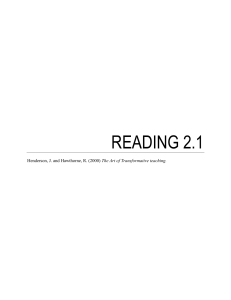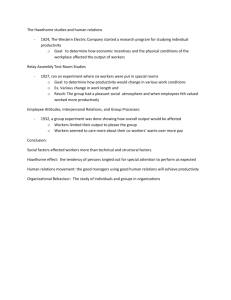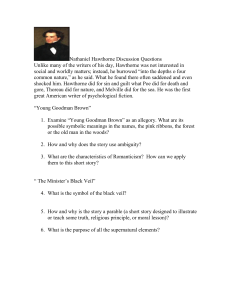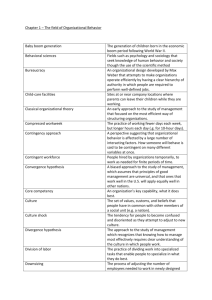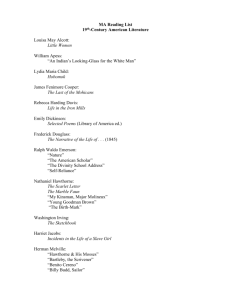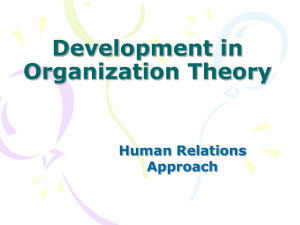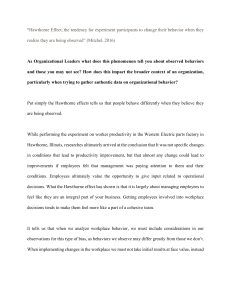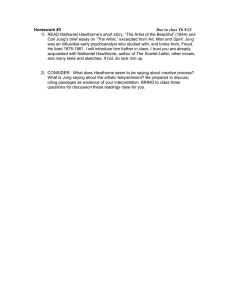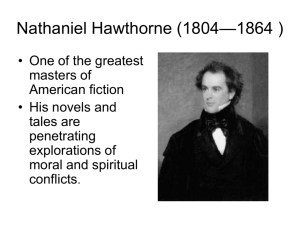Chapter 1: The Field of Organizational Behavior
advertisement
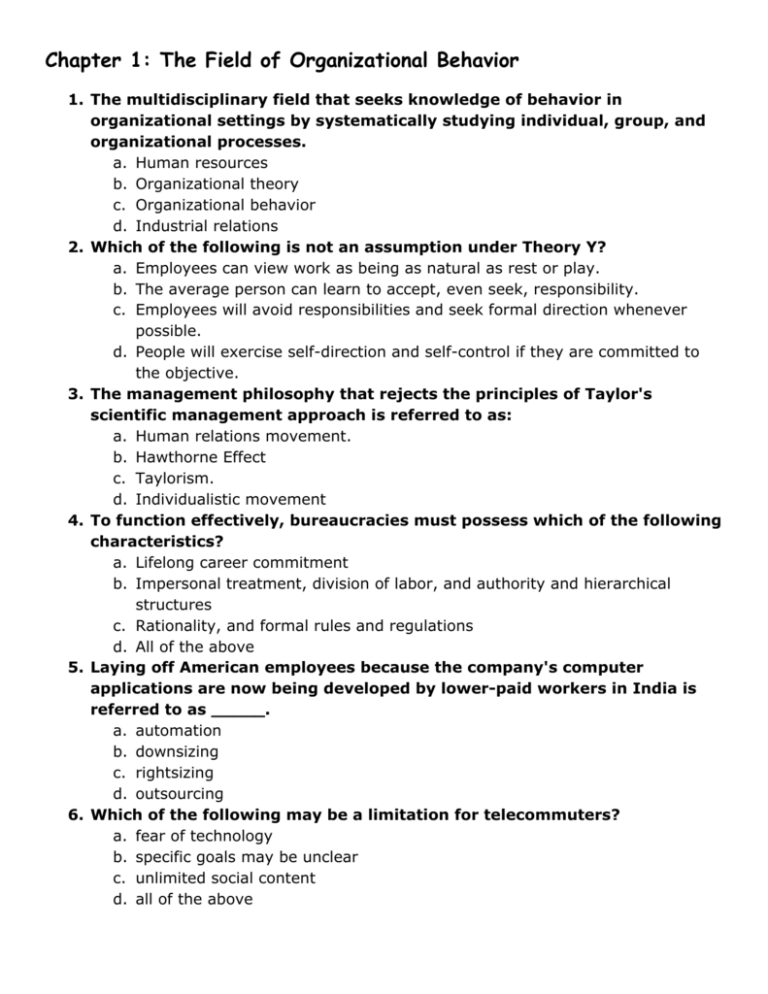
Chapter 1: The Field of Organizational Behavior 1. The multidisciplinary field that seeks knowledge of behavior in organizational settings by systematically studying individual, group, and organizational processes. a. Human resources b. Organizational theory c. Organizational behavior d. Industrial relations 2. Which of the following is not an assumption under Theory Y? a. Employees can view work as being as natural as rest or play. b. The average person can learn to accept, even seek, responsibility. c. Employees will avoid responsibilities and seek formal direction whenever possible. d. People will exercise self-direction and self-control if they are committed to the objective. 3. The management philosophy that rejects the principles of Taylor's scientific management approach is referred to as: a. Human relations movement. b. Hawthorne Effect c. Taylorism. d. Individualistic movement 4. To function effectively, bureaucracies must possess which of the following characteristics? a. Lifelong career commitment b. Impersonal treatment, division of labor, and authority and hierarchical structures c. Rationality, and formal rules and regulations d. All of the above 5. Laying off American employees because the company's computer applications are now being developed by lower-paid workers in India is referred to as _____. a. automation b. downsizing c. rightsizing d. outsourcing 6. Which of the following may be a limitation for telecommuters? a. fear of technology b. specific goals may be unclear c. unlimited social content d. all of the above 7. When living in a foreign country, culture shock typically sets in during what period of adjustment? a. the initial stage; upon arrival and throughout the first month b. the middle stage; typically during the second through the fourth months c. the final stage; typically after sixth months d. all of the above 8. Which of the following is not an important implication for OB? a. As workers adjust to a wider variety of people in the workplace, issues about their norms and values are likely to arise, as well as their willingness to accept others who are different from themselves. b. Differences in age, gender, and ethnic group membership are likely to bring with them differences in communication styles that must be addressed for organizations to function effectively. c. People at different stages of their lives are likely to be motivated by different things. d. All of the above are important implications for OB. 9. Which of the following labor force groups is not rising in the workplace? a. Women b. White, non-Hispanics c. African Americans d. Asians and Hispanics 10. Which of the following is the fastest-growing segment of the U.S. population? a. The Baby Boomers generation b. The age cohort of people over 85 years old c. Generation X d. Generation Y 11. Organizational behavior (OB) is defined as the multidisciplinary field that seeks knowledge of behavior in organizational settings by systematically studying individual, group, and organizational processes. a. True b. False 12. Abraham Maslow is widely recognized as one of the best-known classical organizational theorists. a. True b. False 13. The contingency approach recognizes that behavior in work environments is influenced solely by situational factors or certain conditions. a. True b. False 14. The emergence of the modern science of organizational behavior began in the late 1950s and early 1960s. a. True b. False 15. In the Hawthorne studies, productivity rose simply because the workers responded favorably to the special attention they received, and they were motivated to do their best because they were being studied. a. True b. False 16. The essential nature of jobs and organizations as we have known them is changing, the major catalyst of which can be attributed to rapidly advancing computer technology, especially the use of the Internet and wireless technology. a. True b. False 17. The process of readjusting to ones native culture after spending time away from it is known as repatriation, or reverse culture shock. a. True b. False 18. Believing that everyone should speak English while living in America is an ethnocentric attitude. a. True b. False 19. Founded in the 1600s by a woman, Kikkoman still adheres to the strongly held Japanese traditions of harmony and loyalty (e.g., being loyal to employees and treating individual workers like family). a. True b. False 20. A virtual corporation is a permanent, highly flexible organization formed by a group of companies which join forces to exploit a specific opportunity. a. True b. False 21. The Hawthorne studies found that worker productivity will be increased as a direct result of improving the physical working conditions. a. True b. False 22. Classical organizational theory focused on the effective organization of the work of individuals. a. True b. False 23. In developing his organizational theory, Henri Fayol stated that there should be a clear line of command connecting top management to the lowest-level employees. a. True b. False 24. Division of labor refers to the fact that employees should receive directions from one and only one other person. a. True b. False 25. The principles of organizational behavior are universal in their application across cultures. a. True b. False
